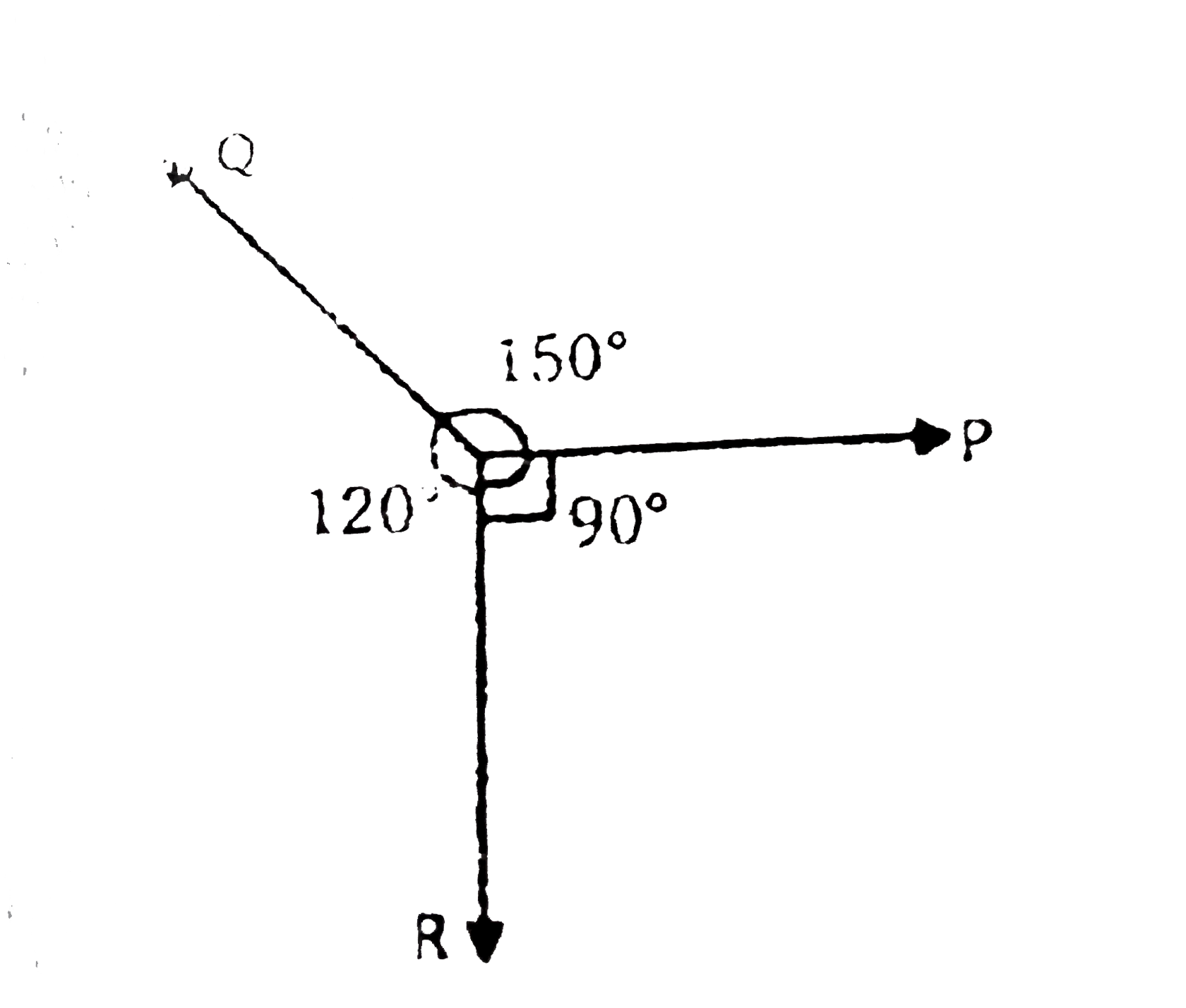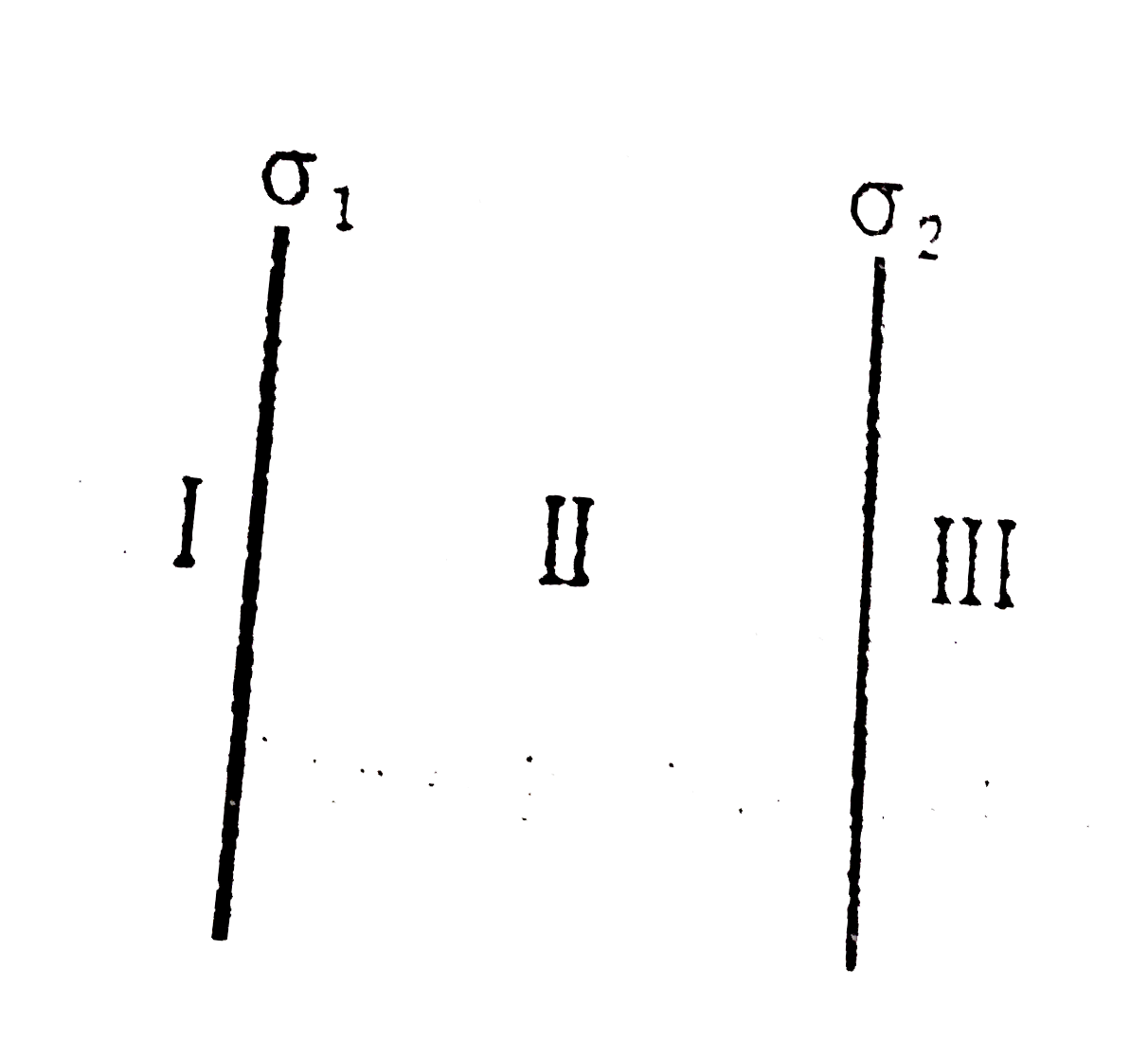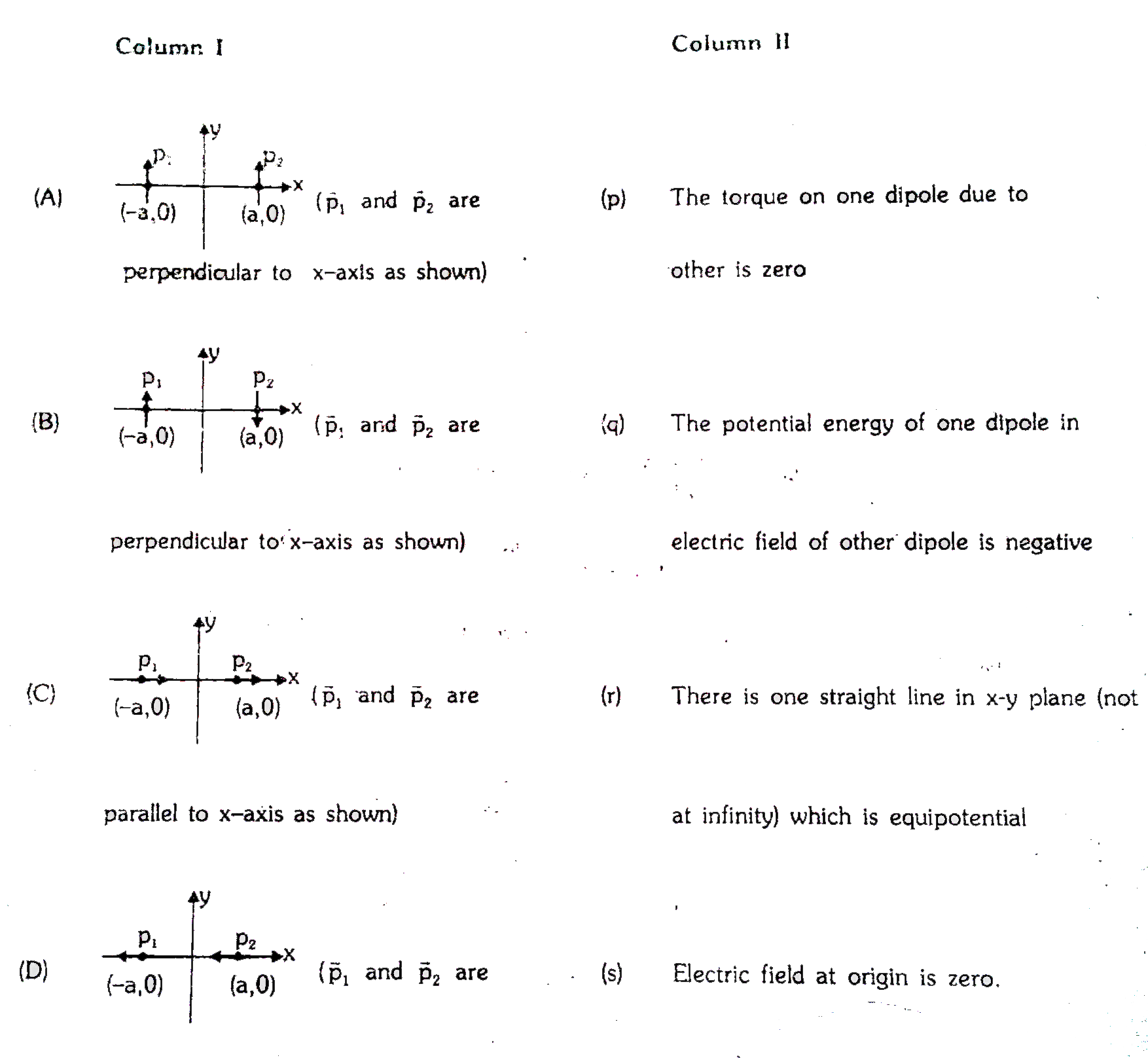Three forces P,Q&R are acting at a point in a plane. The angle between P and Q,Q and R are 150∘ and 120∘ respectivley. Then for equilibrium, forces P,Q&R are in the ratio:Solution in Gujrati
1:2:3
1:2:√3
3:2:1
√3:2:1
The correct Answer is:D

Psin120∘=Qsin90∘=Rsin150∘
⇒P√3/2=Q1=R1/2
⇒2P√3=Q1=2R1=k (constant)
⇒P:Q:R=√3k2:k:k2=√3:2:1
Topper's Solved these Questions
- MISCELLANEOUSBOOK - ALLEN CHAPTER - MISCELLANEOUSEXERCISE - Exercise-03
1 Videos
- MISCELLANEOUSBOOK - ALLEN CHAPTER - MISCELLANEOUSEXERCISE - Exercise-04
1 Videos
- MISCELLANEOUSBOOK - ALLEN CHAPTER - MISCELLANEOUSEXERCISE - Exersice -05(B)
20 Videos
- KINEMATICS (MOTION ALONG A STRAIGHT LINE AND MOTION IN A PLANE)BOOK - ALLEN CHAPTER - KINEMATICS (MOTION ALONG A STRAIGHT LINE AND MOTION IN A PLANE)EXERCISE - BEGINNER S BOX-7
8 Videos
- PHYSICAL WORLD, UNITS AND DIMENSIONS & ERRORS IN MEASUREMENT BOOK - ALLEN CHAPTER - PHYSICAL WORLD, UNITS AND DIMENSIONS & ERRORS IN MEASUREMENT EXERCISE - EXERCISE-IV
7 Videos
Similar Questions
Two parallel metallic plates have surface charge densities σ1 and σ2 as shown in figure.

Column-IColumn-II(A)If σ1+σ2=0(p)Electric field in region III is towards right(B)Ifσ1+σ2>0(q)Electric field in region I is zero(C)If σ1+σ2<0(r)Electric field in region I is towards roght(s)Nothing can be said
View SolutionIn each situation of Column-I two elelctric dipoles having moments →p1 and →p1 of same magnitude (that is ,p1=p2) are placed on x-axis symmetrically about origin in different orientations as shown. In column-II certain inferences are drawn for these two dipoles. Then match the different orientations of dipole in column-I with the corresponding result in column-II.

View SolutionPlanck's constant has dimensions …………….
View SolutionA football player kicks a ball at an angle of 30∘ with an initial speed of 20 m/s. Assuming that the ball travels in a vertical plane, calculate (a) the time at which the ball reaches the highest point (b) the maximum height reached (c) the horizontal range of the ball (d) the time for which the ball is in the air, (g=10m/s2)
View SolutionAssertion : Gravitational forces do not depend on the medium between the masses.
Reason : Mediating particle responsible for gravitational force is graviton.
View SolutionThree forces P, Q and R are acting on a particel in the plane, the angle between P and Q and that between Q and R are 150^(@) and 120^(@) respectively. Then for equilibrium, forces P, Q and R are in the ratio
View SolutionThree forces P,Q and R are acting at a point in the plane. The angle between P & Q and Q & R are 150^(@) & 120^(@) respectively, then for equilibrium, forces P,Q & R are in the ratio
View SolutionThe points (p,q +r) , (q, r+p) and (r, q+p) are _______.
View SolutionAdd p(p−q),q(q−r) and r(r−p)
View SolutionSimply
(apaq)p+q−r.(aqar)q+r−p.(arap)r+p−q
View SolutionFind the angle between the lines whose direction ratios are
p, q, r and q-r, r-p, p-q
View SolutionThe resultant of the two forces P is Q R. If Q is doubled, then the new resultant force will be perpendicular to P. Prove that Q = R
View SolutionThree numbers p, q, r are such that pq=qr, where p,q,r>1 then the correct relation between q and r is :
View Solutionদেখাও যে, (p, q,r), (q,r, p) এবং (r, p,q) বিন্দু তিনটির সংযোগে একটি সমবাহু ত্রিভুজ উৎপন্ন হয়।
View SolutionAdd:p(p−q),q(q−r)andr(r−p)
View SolutionThree numbers p, q, r are such that pq=qr, where p,q,r>1 then the correct relation between q and r is :
View Solution
